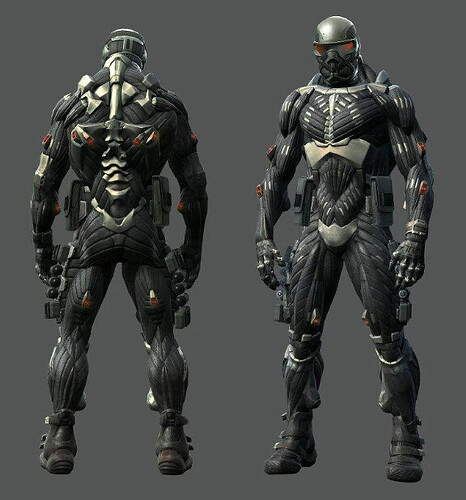Honestly, most of it feels like a somewhat forgettable addition to the classic “artificial muscles” sci-fi genre, but it stands out in the extremities.
The hands, feet, and especially the helmet bring to mind classic military uniforms while maintaining a futuristic look. It’s spot-on and affects the overall silhouette. Those details transform it from a generic sci-fi character into an unmistakable soldier. You might not fully grasp why you feel this way, but you are certain of it.
This is what I preferred about the nanosuits in Crysis 1 and Warhead compared to the redesign in Crysis 2. While Crysis 1’s suit was definitely a muscle suit, it also resembled military gear quite well.
In contrast, Crysis 2’s suit looks overly bulky and excessively muscular, moving away from the military aesthetic and eliminating the larger armor plates. As a result, it doesn’t feel like military equipment anymore, it almost makes you look exposed. I suppose that aligns with the narrative of it essentially becoming a second skin.
I have always enjoyed the notion that it’s cutting edge military technology, a prototype. The armor in the sequel was far too gaudy and dazzling.
In my opinion, the Korean nanosuits in Crysis 1 were much more attractive than the American ones. Those plate carriers/vests made them look even more like military gear.
You are absolutely right. The game was released in 2007, but the events occur in 2020. Throughout the game, you come across futuristic designs that look great without being overly exaggerated, which is fantastic.
The bootstraps, pouches, and ambiguous gas mask shape are undoubtedly what define the military face.
I still really dislike how the later games “streamlined” the controls. It took away the fun challenge of using speed mode to dash to a ledge and then quickly switching to strength mode to jump high enough to reach it. Sure, you could do it with just strength mode, but I enjoyed the process of switching between modes and managing them.
